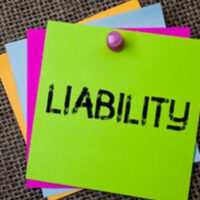Florida’s Attractive Nuisance Doctrine

When a trespasser is injured on someone else’s property in Florida, the law stipulates that that person usually has no right to recover damages from the property owner. However, we all know that children are curious creatures who can inadvertently find themselves in interesting situations. The consequences of this can include a child wandering onto a property because of a temptation they become aware of. Because of this, there is an important exception to the general immunity that property owners have from incurring civil liability from trespassers. This exception falls under something called Florida’s attractive nuisance doctrine.
What Exactly is the Attractive Nuisance Doctrine?
Under the attractive nuisance doctrine, a property owner may be held liable for a trespassing child’s injuries when their property contains an inherently dangerous physical location or object that may be attractive to children and the child became injured as a result. In large part, this is due to a child’s lesser inability to understand the danger of the attractive object when compared with an adult.
Understanding What Constitutes an Attractive Nuisance
Florida law explicitly dictates that certain things are an attractive nuisance which are:
- Iceboxes
- Refrigerators
- Deep-freeze lockers
- Washers and dryers
- Other kinds of similar airtight units from which the doors have not yet been removed
But significantly, there are no limits for what falls with the scope of being an attractive nuisance. This can include any condition or object located on a property that would attract the average child onto it. Other common attractive nuisances include:
- Abandoned vehicles
- Swimming pools
- Trampolines
- Ponds and fountains
When Does the Attractive Nuisance Doctrine Apply?
The best way to understand whether the attractive nuisance doctrine is an option following your child being injured in someone else’s property is to reach out to an experienced personal injury attorney. Generally speaking, the applicability of this doctrine in a specific case turns on factors such as:
- The age of a child
- Whether the property owner knew and/or could have reasonably assumed that there was an attractive nuisance on his or her property that could be attractive and dangerous to a child
- Whether the child who became injured was aware of the potential dangers
- How significant the burden of removing the danger was compared to the potential risk presented to children
- Whether the property owner tried to mitigate the attractive nuisance by undertaking reasonable steps to remove the danger or otherwise protect children from it
Seek Help From a Proven Florida Legal Team
Understanding and collecting the evidence that can help support a claim under the doctrine of attractive nuisance can be complex. If your child has been hurt by dangerous conditions on someone else’s property, it is highly recommended that you explore your legal options as quickly as possible to maximize your chances of obtaining the needed evidence. As the experienced and knowledgeable Orlando personal injury attorneys of The Pendas Law Firm, we can help you navigate through the many potential nuances to understand your rights so you can focus on your child. Contact us today to begin with a free consultation.
The Pendas Law Firm also represents clients in the Jacksonville, Ocala, Tampa, Bradenton, Fort Myers, West Palm Beach, Miami, Fort Lauderdale and Daytona Beach areas.






